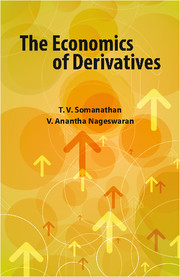Book contents
- Frontmatter
- Dedication
- Contents
- List of Tables, Figures and Boxes
- Foreword
- Preface
- Acknowledgements
- 1 Introduction
- 2 Definition and Typology
- 3 The Economic Functions of Derivatives Markets
- 4 Market Completion
- 5 Derivatives and Price Stabilization
- 6 Derivatives and Price Destabilization
- 7 The Effects of Derivatives on Prices of the Underlying: A Synthesis
- 8 Causes of the Rapid Growth in Derivatives Trading: A Historical Perspective
- 9 The Role of Derivatives in the Global Financial Crisis of 2008
- 10 Models and their Effects on Markets
- 11 Derivatives and Emerging Markets – Part I
- 12 Derivatives and Emerging Markets – Part II
- 13 Regulation of Derivatives
- 14 Derivatives and Development: A Critique
- 15 Regulatory Policy for Derivatives: A Pragmatic Approach
- Index
- About the Authors
2 - Definition and Typology
Published online by Cambridge University Press: 05 May 2015
- Frontmatter
- Dedication
- Contents
- List of Tables, Figures and Boxes
- Foreword
- Preface
- Acknowledgements
- 1 Introduction
- 2 Definition and Typology
- 3 The Economic Functions of Derivatives Markets
- 4 Market Completion
- 5 Derivatives and Price Stabilization
- 6 Derivatives and Price Destabilization
- 7 The Effects of Derivatives on Prices of the Underlying: A Synthesis
- 8 Causes of the Rapid Growth in Derivatives Trading: A Historical Perspective
- 9 The Role of Derivatives in the Global Financial Crisis of 2008
- 10 Models and their Effects on Markets
- 11 Derivatives and Emerging Markets – Part I
- 12 Derivatives and Emerging Markets – Part II
- 13 Regulation of Derivatives
- 14 Derivatives and Development: A Critique
- 15 Regulatory Policy for Derivatives: A Pragmatic Approach
- Index
- About the Authors
Summary
In chemistry, a derivative is defined … as a ‘substance related structurally to another substance and theoretically derivable from it’ or ‘a substance that can be made from another substance’. Derivatives in finance work on the same principle.
Rene M. StulzFor all its current importance in finance, the term ‘derivative’ is of recent origin. Just a generation ago, readers may have assumed that the term related to mathematics (as in ‘second derivative of a function’) or chemistry (as in ‘derivatives of carbon’). The acclaimed book Inside the Financial Futures Markets by Mark J. Powers and D. Vogel, published in 1984 and dealing exclusively with (what are now called) derivatives, did not use the word even once. This chapter looks at what derivatives are, how they may be classified and finally, what they are not.
Definition of derivative
A conventional and commonly used definition is as follows:
A derivative security is a contract designed in such a way that its price is derived from the price of an underlying asset.
Thus, a gold futures contract derives its price from the price of gold, which is the ‘underlying’ asset; an option on crude oil derives its price from the price of crude oil; a currency swap derives its value from the exchange rate of the currencies involved.
The first, and minor, problem with this definition is that the ‘underlying’ may not be an asset in the conventional sense: the underlying may be a liability (such as a bond) or an index (like the Standard & Poors or S&P 500 share index). However, this is a semantic issue. Mathematically, a liability is a negative asset. An index is the average value of a set of assets or liabilities. Whether something is an asset or liability also depends on whose perspective is involved.
The second and bigger problem is that certain instruments now widely considered as ‘derivatives’ are based on the occurrence of events (such as a debt default), which do not themselves have a ‘price’ in the common sense meaning of the term.
- Type
- Chapter
- Information
- The Economics of Derivatives , pp. 8 - 21Publisher: Cambridge University PressPrint publication year: 2015



